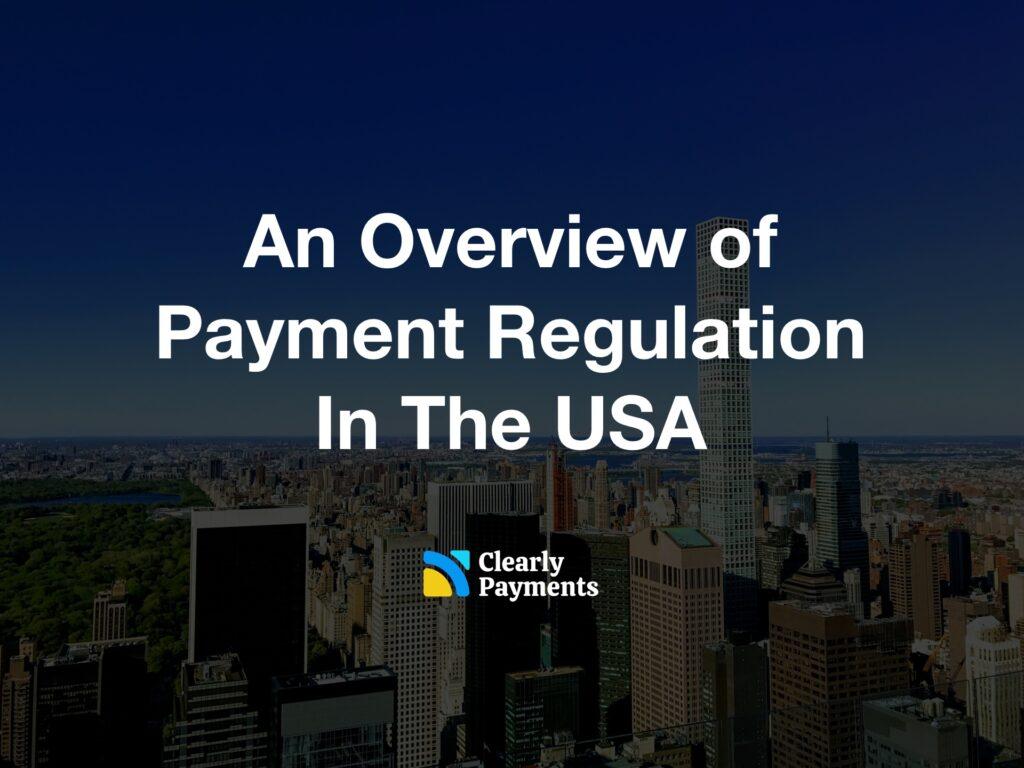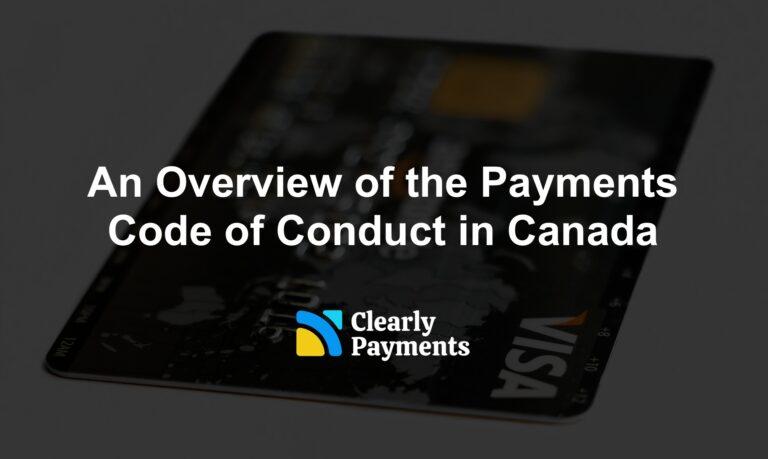The payment landscape in the United States is intricate, continuously evolving to accommodate innovations and meet the changing demands of consumers. To ensure the smooth operation of this system and protect the interests of all stakeholders, a robust regulatory framework is in place.
This article aims to provide an in-depth overview of the key regulatory organizations, payment regulations, and prevailing trends that shape payment regulation in the USA.
Why Payment Regulation Exists
Payment regulation exists for ensuring the integrity, stability, and equity within the payment ecosystem. Its primary objectives encompass safeguarding consumers, maintaining financial stability, promoting market integrity, preventing fraud and security breaches, and ensuring legal compliance. Through transparent disclosures, dispute resolution mechanisms, and limits on consumer liability, regulations shield consumers from deceptive practices and ensure their financial well-being. Moreover, by establishing rules for payment networks and financial institutions, regulation mitigates systemic risks and fosters fair competition, thereby enhancing market efficiency.
Additionally, payment regulation mandates stringent security measures, data protection standards, and adherence to anti-money laundering (AML) regulations to thwart fraud, cybersecurity breaches, and illicit financial activities. By enforcing compliance with legal frameworks, regulation not only upholds the integrity of the financial system but also safeguards national security interests.
Key Regulatory Organizations in The USA
Federal Reserve System: The Federal Reserve, often referred to as the Fed, plays a central role in overseeing the nation’s payment systems. It formulates policies, provides services, and conducts research to promote the safety, efficiency, and accessibility of payment systems.
Consumer Financial Protection Bureau (CFPB): Established in response to the 2008 financial crisis, the CFPB is tasked with protecting consumers in the financial marketplace. It monitors and enforces regulations related to payment products and services to ensure fair treatment and transparency for consumers.
Office of the Comptroller of the Currency (OCC): As an independent bureau within the U.S. Department of the Treasury, the OCC supervises and regulates national banks and federal savings associations. It oversees compliance with federal banking laws, including those governing payments.
Federal Trade Commission (FTC): The FTC is responsible for enforcing antitrust laws and protecting consumers from deceptive or unfair business practices, including those related to payments. It investigates and takes enforcement actions against entities engaged in anticompetitive behavior or consumer fraud.
Department of Justice (DOJ): The DOJ enforces federal laws, including those pertaining to payment systems and financial crimes. It investigates and prosecutes cases involving fraud, money laundering, and other illicit activities that undermine the integrity of payment systems.
State Agencies: In addition to federal oversight, individual states have regulatory agencies responsible for overseeing financial institutions and consumer protection within their jurisdictions. These state agencies add another layer of regulation, contributing to the complexity of the regulatory landscape.
Payment Networks: Major payment networks such as Visa, Mastercard, and the Automated Clearing House (ACH) Network also play significant roles in regulating payment transactions. They establish rules, standards, and fees for participating financial institutions and merchants.
Financial Institutions: Banks, credit unions, and other financial institutions that offer payment services are subject to regulatory oversight by federal and state agencies, as well as compliance with payment network rules and standards.
Key Payment Regulations in The USA
Electronic Fund Transfer Act (EFTA): Enacted in 1978, the EFTA establishes the rights, liabilities, and responsibilities of consumers and financial institutions engaged in electronic fund transfers (EFTs). It mandates disclosure of terms and conditions, error resolution procedures, and limits on consumer liability for unauthorized transactions.
Truth in Lending Act (TILA): Originally enacted in 1968 and subsequently amended, TILA requires lenders to disclose key terms and costs of credit transactions to consumers. It aims to promote the informed use of credit and protect consumers from unfair or deceptive lending practices.
Equal Credit Opportunity Act (ECOA): Enacted in 1974, the ECOA prohibits discrimination in credit transactions based on characteristics such as race, color, religion, national origin, sex, marital status, age, or receipt of public assistance. It promotes fair access to credit for all consumers.
Regulation E (Electronic Fund Transfers): Implemented by the Federal Reserve Board pursuant to the EFTA, Regulation E sets forth requirements for financial institutions offering EFT services. It covers disclosures, error resolution procedures, and limitations on consumer liability for unauthorized transfers.
Regulation CC (Availability of Funds and Collection of Checks): Issued by the Federal Reserve Board, Regulation CC governs the availability of funds deposited by check and the collection and return of checks. It establishes maximum hold periods for check deposits and outlines requirements for expedited availability of certain types of checks.
Payment Card Network Rules: Visa, Mastercard, and other credit card networks have their own sets of rules and standards governing the operation of their networks. These rules cover various aspects such as interchange fees, transaction routing, card acceptance requirements, and data security standards.
How Payment Regulatory Bodies Work Together
In the United States, a complex ecosystem of organizations and regulations collaborates to ensure the smooth and secure functioning of payment processes. At the heart of this framework is the Federal Reserve, which provides the foundational infrastructure through systems like Fedwire and initiatives such as FedNow, aimed at facilitating instant payments. These efforts are complemented by agencies like the Consumer Financial Protection Bureau (CFPB) and the Federal Trade Commission (FTC), which establish and enforce consumer protection laws to uphold fairness and transparency in financial transactions.
Furthermore, banking regulators play a pivotal role in defining the standards and protocols that banks must adhere to when engaging in payment activities. This includes setting licensing requirements, ensuring capital adequacy, and establishing cybersecurity measures to safeguard sensitive financial data. Meanwhile, payment networks like Visa and Mastercard contribute to the ecosystem by establishing rules and standards for their networks, which facilitate efficient transaction clearing and settlement while minimizing fraud and chargebacks.
Within this framework, the Automated Clearing House (ACH) network governs electronic transfers between banks, ensuring interoperability and security across different financial institutions. All participants in the payment ecosystem are also committed to upholding security standards such as the Payment Card Industry Data Security Standard (PCI DSS) to protect cardholder data and prevent fraud.
Moreover, regulatory bodies like the Federal Reserve and banking regulators monitor the overall health of the payment system, intervening as necessary to address disruptions or systemic risks. As technology continues to evolve, all stakeholders collaborate on developing new regulations and standards to accommodate emerging innovations like mobile wallets and digital currencies, ensuring that the payment ecosystem remains resilient and adaptable.
Effective communication and collaboration among all players, facilitated by industry groups and trade associations, enable coordinated responses to emerging issues and threats, ensuring that payments in the United States remain efficient, secure, fair, and innovative.
Current Trends Impacting Payment Regulation
Rise of Fintech: The proliferation of fintech companies leveraging technology to offer innovative payment solutions has disrupted traditional banking and payment models. Regulatory agencies are adapting to address the unique challenges and opportunities presented by fintech innovation.
Open Banking: Initiatives promoting open banking aim to enhance competition and consumer choice by enabling the secure sharing of financial data among authorized third-party providers. Regulatory efforts focus on safeguarding consumer data privacy and security while fostering innovation and competition.
Faster Payments: The Federal Reserve is spearheading efforts to modernize the U.S. payment system by developing a real-time payment service known as FedNow. This initiative aims to facilitate faster, more secure, and more efficient payments, keeping pace with evolving consumer expectations.
Cybersecurity: With the increasing frequency and sophistication of cyber threats targeting payment systems, regulatory focus has intensified on enhancing cybersecurity measures and ensuring prompt detection and response to security incidents. Regulations mandate robust data security practices and require prompt notification of data breaches to affected parties.
Cryptocurrency: The growing popularity of cryptocurrencies like Bitcoin and Ethereum as alternative payment methods has prompted regulatory scrutiny and debate. Regulatory agencies are grappling with issues such as consumer protection, anti-money laundering compliance, and the potential impact of cryptocurrencies on traditional payment systems.
Challenges and Opportunities in Payment Regulations in the United States
Navigating the intersection of innovation and consumer protection poses a significant challenge for regulators in the payment industry. Striking a delicate balance between fostering innovation and ensuring robust consumer safeguards, including privacy and financial stability, is paramount. Regulators must continuously evaluate and adapt regulatory frameworks to keep pace with evolving technologies and emerging payment models while maintaining consumer trust and confidence in the financial system.
Coordinating regulatory efforts across various federal and state agencies presents another obstacle in the payment regulatory landscape. The decentralized and fragmented nature of regulatory oversight can lead to inconsistencies and inefficiencies, hindering the development of cohesive regulatory strategies. Streamlining regulatory processes and enhancing collaboration among regulatory bodies are essential for promoting consistency and coherence in payment regulation.
Regulating emerging technologies presents both challenges and opportunities for regulators. The rapid evolution of technologies such as blockchain, artificial intelligence, and biometrics introduces novel risks and complexities in the payment ecosystem. Regulators must stay abreast of technological advancements and develop agile regulatory frameworks capable of addressing emerging risks while fostering responsible innovation. Embracing technological innovation offers opportunities to enhance efficiency, security, and accessibility in payment systems while ensuring compliance with regulatory requirements and safeguarding consumer interests.




